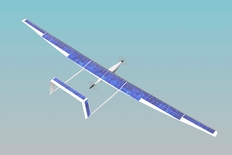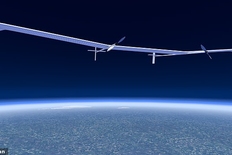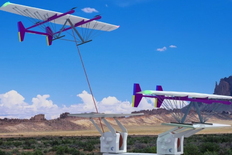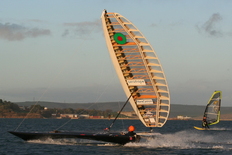Chris Hornzee-Jones is an original team member, designer and sponsor of both Sailrocket boats. The design team set out to find a radically different concept for a boat that is capable of breaking the current speed sailing record.
Sailrocket 2 finally broke the outright world speed sailing record three times during its sailing campaign in Walvis Bay, Namibia, in November 2012. The course in this lagoon is only just long enough to ratify the official distances of 500 meters or the nautical mile (1,852 meters).
The Records:
12th Nov: 61.92 knots peak, 54.08 knots average over 500m. (Class B record)
16th Nov: 64 knots peak, 52.53 knots average. (Outright World Record No.1)
18th Nov: 63.98 knots peak, 59.33 knots average over 1,852m. (Nautical Mile Record & Outright Record No.2)
24th Nov: 68.01 knots peak, 65.45 knots average (75.3 mph/ 121.2 kmh), over 500m (Outright World Record No.3).
Sailrocket 2’s main innovation lies in the way in which the sail and keel elements are positioned so that there is virtually no overturning moment and no net vertical lift. The record breaking speeds were achieved when fences were added to the base cavitating hydrofoil during the sailing campaign November 2012.
Aerotrope were prinicipal designers of the hydrofoil for VSRII as well as its wingsail and complete platform. Chris Hornzee-Jones was also the wing sail designer for Sailrocket Mk I.
We co-developed several design concepts for VSRII and took part in the selection process.
Aerotrope then set about designing the new platform and rigid wing, and took on the re-design of the foil after the first version did not produce the expected results. Our engineer Wang Feng wrote a performance prediction programme (PPP) that ensured we could avoid stability problems (such as the crashes and backflip of the first Sailrocket) while pushing for maximum speed.
Our calculations confirmed that we should move VSRII’s aerodynamic centre behind the centre of gravity, which was not the case in Sailrocket I. With the new design, the point of becoming airborne was no longer a problem for the boat.
Sailrocket 1 vs. Sailrocket 2:
The design changed from a 'conventional' boat configuration to a 'canard', which means the centre of gravity is ahead of the aerodynamic centre.
The platform: The centre of gravity is now ahead of the aerodynamic centre. The hull is changed into a fuselage, which is completely lifted out of the water and points to the apparent wind direction to minimise its drag. Instead of planing on the hull in two places, VSR2 is only planing in the front float, the leeward float is supported by the wing extension flying in surface effect, and the rear of the boat is foiling.
The hydrofoil: The straight foil design changed to an ‘L’ shape foil, so that the upper part of the foil provides passive height (heave)stability.
The new base-ventilated hydrofoil was designed by Aerotrope using our in-house analytical tools, in order to handle the surface-piercing conditions very stably at high speed with minimum drag.
The wing: We changed the design from a “symmetric” wing planform to an asymmetric planform, which brings the centre of effort of the wing closer to sea level. This way we could afford a bigger wing while keeping the overall dimensions of the boat down. Also, the wing is now freely feathering, which allows the boat to slow down safely in adverse wind conditions. The fillet and extension are a new feature to the wing, which not only increases the total efficiency of it, but also provides passive stability for the leeward float.
Fuselage: We now call the hull a fuselage (as in aviation) since it completely lifts out of the water. The fuselage is pointing at the apparent wind direction, which helps to reduce drag.











